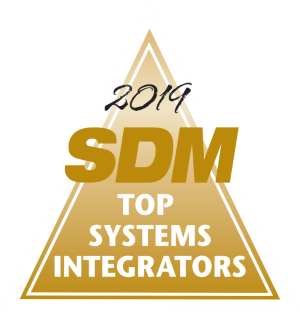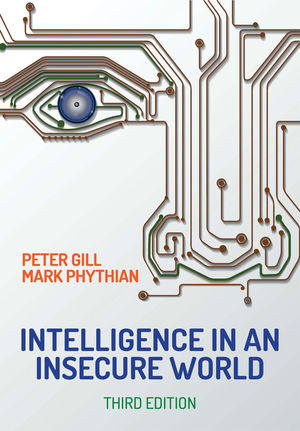Integrators and manufacturers who execute security projects in sporting venues now have an award for the work they do — the Golden Eagle Award. The award, sponsored by SDM, is from the National Center for Spectator Sports Safety and Security (NCS4).
The University of Southern Mississippi is home to the National Center for Spectator Sports Safety and Security and the Golden Eagles. This award recognizes excellence in the safety and security aspects of sports venues by their designers, builders and integrators. The award will honor the best project among all nominees each year. The naming of the Golden Eagle Award also recognizes the commitment and work that the University of Southern Mississippi does in contributing to safety and security in the global spectator sports industry.
The security projects from the four entrants are presented on these pages. Their case studies will be presented to attendees of the 2015 National Sports Safety and Security Conference & Exhibition, during a morning session on July 7, 2015, to be held in Orlando, Fla. The audience then will select one of them as the third annual Golden Eagle Award winner. See “More Online” on page 108 to learn the winner. Learn more at www.ncs4.com/conference/awards.
NCS4 Golden Eagle Award Nominee – Arecont Vision
Sports venue: MetLife Stadium, East Rutherford, N.J.
Located in the Meadowlands and part of the MetLife Sports Complex in East Rutherford, N.J., MetLife Stadium is home to the New York football Giants and the New York Jets. The $1.6 billion stadium opened in April 2010 and boasts a seating capacity of 82,500. It is one of the NFL’s largest stadiums, and was host to Super Bowl XLVIII in 2014.
MetLife Stadium wanted to replace 26 IP cameras located at the perimeter gates of the stadium and also to deploy 180-deg. panoramic-view cameras in place of the 27 pan-tilt-zoom cameras that covered the exterior perimeter. Given the large crowds they attract, each football game, concert or other event has its share of unique challenges, including monitoring fan conduct, crowd management situations and dealing with medical emergencies. MetLife Stadium’s main goal in upgrading its surveillance system was to ensure a safe, secure environment that would contribute to a memorable guest experience.
MetLife Stadium staff members are challenged with trying to determine what happened after an incident occurred. Clear recorded video is needed to reveal the actual facts of an incident. Prior to the new camera system being installed, MetLife Stadium used four PTZ cameras to monitor the seating bowl area and these cameras were only used reactively. With the new camera system, every seat in the seating bowl is monitored at all times. Among the stadium security management team’s other goals are to identify and examine objects left behind, monitor security-screening procedures, investigate slip-and-fall incidents, observe staff performance, and provide surveillance for counterterrorism efforts.
Because MetLife Stadium was designed to be a network-controlled building, IP cameras were part of the original design. When it came time to install cameras to cover the seating bowl, IP was the only platform considered, according to Daniel DeLorenzi, director of security for MetLife Stadium. “To run an analog system would have been cost-prohibitive due to cabling, and the cables would be single-purpose. If upgrades were necessary, the project would have to be completed all over again,” he said.
DeLorenzi and the rest of the stadium’s security management team turned to Robert McCabe, owner of Corporate Security Services Inc., Edison, N.J., to assist in selecting IP surveillance components and to design and implement the video surveillance solution. After a careful evaluation process, an optimal surveillance solution was built around megapixel imaging technology from Arecont Vision to ensure wide area coverage with extreme detail and to enable forensic zooming on live and recorded video.
Corporate Security Services deployed more than 130 Arecont Vision megapixel cameras throughout MetLife Stadium, including MegaVideo Compact 10-megapixel (MP) cameras installed around the bowl to provide a view of every seat in every section; SurroundVideo panoramic 8MP cameras provide 180-deg. coverage of entrances and common areas; MegaDome 2 3MP cameras with remote focus and wide dynamic range are located in the stadium’s security entrance areas. Arecont Vision WDR cameras provide detailed video where bright and dark images exist in the same scene.
The Arecont Vision megapixel cameras are controlled using Genetec Security Center, a unified video management system, which is monitored by a centralized security command center within the stadium.
Because of the high level of detail it provides, one Arecont Vision SurroundVideo panoramic camera covers the same area as multiple IP VGA resolution cameras. By using Arecont Vision cameras to reduce overall camera counts, MetLife Stadium’s security team was able to achieve its goal of implementing an unobtrusive high-performance video surveillance system.
MetLife Stadium’s policy is to initiate real-time recording 24 hours prior to game day, at which time every camera within the stadium is recorded at its full frame rate. Incidents are recorded prior to, during and for several hours after a game or other event. This allows the security staff to easily search and play back detailed video of any reported incidents from any of the cameras to determine what happened.
The excellent image quality provided by the Arecont Vision megapixel cameras makes it possible for stadium security to identify individuals, and the high frame rates allow them to see actions that occur. Additional benefits are day/night video capabilities where mechanical IR cut filters are used for clear images in low light, H.264 compression to reduce network and storage costs, and PoE to reduce cabling costs. n
NCS4 Golden Eagle Award Nominee – Axis Communications
Sports venue: American Airlines Center (AACenter), Dallas
With four lobbies and multiple entry points, security is a 24/7 responsibility. Much like a small city, the arena also features dozens of retail stores, concession stands, restaurants, ATMs and customizable meeting rooms.
The arena’s security team must maintain public safety, monitor crowd control, and stay alert for loss prevention issues in this bustling, high-traffic facility. Originally, the AACenter relied on an analog camera system. However, by 2014, many cameras were failing and the system was becoming out-of-date. To ensure it continued to provide the best possible security, the AACenter upgraded to a modern, cutting-edge IP surveillance system.
With technical support from the local Axis Communications’ representative, AACenter’s Director of Operations, Mose Boyer, analyzed every square inch of the building to determine which camera models would provide the best fields of view and meet the lighting challenges of each location. For instance, installing HDTV-quality AXIS Q6044-E pan/tilt/zoom network cameras with 30x zoom on all four corners of the rooftop gives security a great view of the parking lots. Elsewhere, AXIS P3364 network cameras with built-in IR illumination keep watch over suites that are only lit by emergency lights when not in use. In the atrium areas where bright ambient light could easily wash out the image, Boyer chose AXIS P3384-V network cameras with advanced Wide Dynamic Range-Dynamic Capture to balance extreme variations in lighting. Wide angle lenses were used to cover larger areas, such as the rotunda on the concourse and some retail locations.
With the assistance of Johnson Controls Inc., a leading systems integrator and an Axis partner, the arena deployed 228 Axis network video cameras throughout the building. The system is managed through an exacqVision video management system, and video is stored on four 20-terabyte exacq servers.
The surveillance upgrade has been a night and day improvement for the arena. In the command center, the facility has gone from watching an analog feed in VGA resolution on 17-inch to 19-inch monitors, to viewing digital video in HDTV 1080p resolution on a bank of six 47-inch LED monitors. They have more than doubled the number of working cameras monitoring the facility from the time they began the installation.
The clarity of the HDTV-quality Axis cameras allows building security to quickly identify and resolve more incidents than before. For example, during an altercation in the seats at a game, one party insisted another guest be ejected from the premises. This patron also claimed that guest services failed to handle the situation correctly and demanded the employee be fired. When security reviewed the video of the incident, they found the employee was not at fault. When the patron was presented the evidence, the complaint was rescinded.
The expanded coverage also helps the team expedite investigations and speedily resolve issues, including theft. For example, when an employee’s smartphone went missing from a charging station at the front of one of the club restaurants, security was able to review video from other cameras in the vicinity and track the suspect until they had a clear view of his face and the phone in his hand. From the clarity of the image, they were able to determine the identity of the individual — a third-party contractor. After contacting the individual’s employer, the phone was returned the next day.
“Upgrading our system to Axis cameras was like leaping from the Stone Age into the Technology Age. The image clarity and color fidelity are unbelievable. Our security team is catching incidents they never could have with our old analog cameras,” Boyer said. n
NCS4 Golden Eagle Award Nominee – Esri
Sports venue: Boston Marathon, Richmond International Raceway
Esri’s Public Safety Assistance Program was involved with response organizations at both Boston and Henrico (NASCAR) to help those agencies share geospatial information, allowing them gain and maintain situational awareness, manage resources, and effectively identify and respond to incidents should they occur.
Esri engages with the customer as early as possible to obtain operational and functional requirements for the event. Those requirements are translated into technical processes that ultimately result in the delivery of various mission-focused applications that are used by the various public safety roles. Those requirements also allow Esri to bring in carefully selected partners who fulfill specific user requirements. In the case of these two events, Esri brought in Accuweather (Boston and Henrico), iNetDispatch (Henrico) and Delorme (Henrico). Finally, Esri provides training in the implemented technology, as well as on-site support throughout the event.
The challenges of running a large event require more than a common operating picture — you need a platform, claims the company. Esri successfully implemented a platform that gave event public safety personnel scalable technology that worked on the desktop, within the cloud, or in the field. It delivers relevant content and tools when and where they are needed using simple applications, enabling collaboration and information-sharing across an organization and among partners at all levels for a more coordinated effort.
Esri implemented various applications resident within its ArcGIS platform. Those products include the operations dashboard and collector applications, as well as its Geovent Extension. Esri’s cloud-based ArcGIS Online was utilized to provide an information-sharing environment that enabled agencies from various disciplines and jurisdictions to share information seamlessly, allowing them to visualize that information on any device.
The solution delivered provided the customer with previously unheard of levels of situational awareness and information sharing, according to NCS4. State, local and federal stakeholders successfully shared and visualized dynamic information, and collaboration between agencies was dramatically increased. The use of the technology has had implications for all customers far beyond the event itself, changing the way that they do business as an agency, the group reports. n
NCS4 Golden Eagle Award Nominee – Rapiscan Systems
Sports venue: Marlins Park, Miami
The challenge of enhancing event security continues in parallel with the goal of bringing the fans closer to the game. The fan experience is critical for all events, and behind-the-scenes event planners and security officers know that fan experience is maintained only in a safe environment. Keeping fans safe from targeted attacks, or even from an over-exuberant fan that becomes dangerous, is paramount and complex.
With Miami-based Marlins Park having a capacity of more than 37,000 people, the Miami Marlins were in need of a solution that would allow them to effectively screen fans to the level needed to maintain safety and security without impeding the fan experience.
To meet the directive from MLB, the Miami Marlins reached out to security providers to find the best solution for their facility requirements. Ultimately, the Marlins selected Rapiscan Systems and their line of Metor walk-through metal detectors. The end result was their purchase of three of Rapiscan Systems’ Metor 6M units and 23 of the NCS4-lab-tested Metor 6WP units.
Rapiscan’s Metor walk-through metal detectors are designed to allow the stadium to maintain the levels of throughput needed while taking away the need for the human factor in deciding if a threat may exist. The products allow for security flexibility with easy transportability, easy-to-use operator prompts and highly configurable settings, according to NCS4.
Additionally, in preparation for Major League Baseball’s security requirement change, Rapiscan Systems worked with NCS4 to become one of several vendors trusted with protecting America’s pastime. Rapiscan submitted its Metor 6WP walk-through metal detector for an extensive evaluation in the National Sports Security Laboratory at the University of Southern Mississippi. Passing the rigorous testing confirms that Rapiscan’s Metor 6WP meets the operational and technological needs of venue operators and security personnel at sports venues.
For the Miami Marlins, the Metor series of walk-through metal detectors creates a higher security level and keeps the fan experience positive while maintaining throughput. The systems are fully weatherproof and lightweight, and allow the Marlins to set up, take down and move systems as needed.
The systems have performed well thus far and to date have ensured that no contraband has entered Marlins Park. The machines have kept fans safe while having no negative impact on the fan experience. The superior detection capability of the Metor family of walk-through metal detectors has allowed the Miami Marlins to effectively and efficiently screen fans entering Marlins Park for every home baseball game this season, and Marlins’ executives feel that the systems have performed well.
Who Will Win?
At the National Sports Safety and Security Conference & Exhibition in Orlando, Fla., the case studies of the finalists will be presented to conference attendees. The audience then will select one of them as the third annual Golden Eagle Award winner, which will be announced on July 8, 2015. SDM will announce the winner on its facebook page at www.facebook.com/SDMmagazine. If you like SDM in print, please “like” us on Facebook, too, and learn which company was chosen as the third Golden Eagle Award from NCS4, the National Center for Spectator Sports Safety and Security.

















